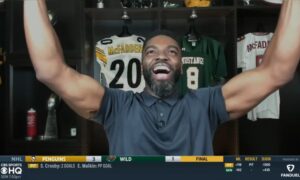Being a kick/punt returner in the National Football League is an exciting opportunity to impact the game on special teams. While returning kicks has become more difficult over the last several years with rule changes to promote player safety, we still see highlight plays occur after the ball is kicked, giving the receiving team an opportunity to make a little magic happen. Devin Hester made a name for himself as one of the best kick returners of all time during the 2000s while Deion Sanders stared as a kick and punter returner while also being a shutdown cornerback for most of his NFL career.
Still, more often than not, kick and punt returners don’t run them back all the way, meaning that they are on the receiving end of some big collisions. This is the reason CB Patrick Peterson decided to get taken off punt return duties after his first two seasons in the league, recognizing the need to preserve his body and thus better extend his NFL career as a cornerback.
“But Mac, here’s why I left being a return man,” Peterson said to Bryant McFadden on the All Things Covered Podcast which aired on YouTube. “Man, Mac, the way I used to wake up in the morning after being a rookie, but I fought through it because it’s a mentality. It’s a mindset, man. Ain’t nobody going to feel sorry for me. You know what I mean? So, it was a mindset. I to find a way to work through that. But I was like, ‘Hey man, if I wanna play 10+ years, yeah, I can’t be a four-down guy no more.’”
Peterson made a profound impact on special teams during his time at LSU, returning 32 kickoffs for 932 yards (29.1 YPR) along with 26 punts for 418 yards (16.1 YPR) and two TDs in 2010, being named SEC Special Teams Player of the Year along and a unanimous All-American that same season. He immediately made a huge impact for the Cardinals after getting drafted with the fifth overall pick in 2011, returning 44 punts for 699 yards (15.9 YPR) and four TDs. He would return 51 punts the next season in 2012, seeing his punt return average drop drastically (8.4 YPR) and continued to see his opportunities and return average drop each season after.
Peterson was electric returning punts at LSU and during his rookie season in the league, but all of those hits along with logging 1,000+ snaps on defense as a CB1 add up over time. Peterson saw this and made the difficult decision to be smart and take care of his body.
The Steelers experienced a similar situation with former WR Antonio Brown, who was a dynamic return man to start his career, returning four punts and one kickoff for scores. However, once Brown became a full-time starter at WR, he got taken off kick returns after the 2011 season and eventually saw his work as a punt returner dwindle as well after 2015 during the prime of his career as a receiver.
While you may want to put your best guys out on the field at all times, sometimes you must have the long-term picture in mind. Peterson wanted to enjoy a long, fruitful NFL career, and he has done just that, still playing as a high level despite turning 33 prior to the start of training camp. Football is a violent sport, and being a return specialist can get you in a fair amount of car crashes if you aren’t careful. For Peterson, it was probably the best decision to extend his career in the pros. Now, we look at the state of Pittsburgh’s returner situation in 2023 and see if second-year WR Calvin Austin III can win the job as the team’s punt returner and if his health will be factored into the team’s decision at that spot.








